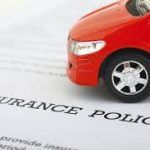How to Shop for Car Insurance
Shopping for car insurance can be daunting. You are required by law to buy it, but it’s not a product that you can see, touch, or inspect. Therefore, you need to arm yourself with knowledge of what you are buying.

How to shop for auto insurance: terms and definitions
Auto insurance terms and definitions you need to understand
Here is a quick start list of defined terms:
Bodily Injury Coverage: The part of the policy that pays for injuries caused to other people in an accident.
Comprehensive Coverage: The part of the policy that pays for damages to your car caused by things other than accidents.
Collision Coverage: The part of the policy that pays for damages to your car in an accident.
Declarations Page: The first page of an insurance policy, which lists the amount of coverage, the term of the policy, and other important items.
Deductible: The amount that you pay before your collision or comprehensive coverage begins to pay.
Expiration Date: The last day on which you will have coverage. This is usually the day that the renewal premium is due.
Liability Coverage: The part of the policy that pays other people the amounts that you are legally required to pay.
Limits: The maximum amounts that your policy will pay for various parts of the coverage.
Personal Injury Protection: The part of the policy that pays medical bills and lost wages for persons injured in an accident.
Premium: The amount of money that you need to pay to have coverage.
Proof of Insurance: A card (or sometimes an electronic version on your smartphone) that you keep in your car to show that you are insured. In most states, you are required to show this to a police officer upon request.
Roadside Assistance Coverage: Coverage that pays the cost of towing and minor roadside repairs.
Term: The length of time that your insurance policy is in effect.
Umbrella Policy: Extra liability coverage that goes beyond the limits of your home or auto insurance. It provides an extra layer of security if you get sued for damages that are greater than your home or auto policy limits.
Underinsured Motorist Coverage: The part of the policy that covers your property damage and bodily injury if the other driver is at fault and if the amount of damages is more than the other driver’s liability coverage.
Uninsured Motorist Coverage: The part of the policy that covers your property damage and bodily injury if the other driver is at fault and doesn’t have insurance.

How to shop for car insurance: how much car insurance is enough?
How much car insurance is enough? Are there any meaningful “rules of thumb?”
How much coverage do you need for your own car, and how much liability coverage do you need for damages caused to someone else?
First, let’s go over the amount of liability coverage that will be necessary. Liability coverage is the part of your policy that compensates other people for damages that you caused while driving. Your state will require you to have a certain minimum coverage. You can look that minimum up at the Insurance Information Institute website, but most states have three separate minimums to consider: Minimum coverage per person for bodily injury, per accident for bodily injury, and per accident for property damage.
Once you have enough liability coverage to satisfy your state’s minimum, there’s a natural tendency to think that you’re taken care of. After all, any payment will be money that’s going to someone else. If your state minimum, for example, is $100,000, this means that a stranger—the person you got into an accident with—will get $100,000 from your insurance company. That sounds like a lot of money, and it’s natural to think that you shouldn’t pay more in premiums just so that some other driver can get even more.
However, you need to remember that you’re not buying insurance as an act of charity toward another person. The real reason for liability coverage is to protect you from financial disaster. That’s because liability coverage only comes into play if you are legally required to pay the other person because they sue you or threaten to sue you. If someone does threaten to sue you because of an accident, then the insurance company will provide a lawyer. If you lose, then they will pay, up to the limits of your policy.
If someone sues you and wins more than your policy limits, then you are responsible for the additional amount. For example, if your policy limit is $100,000, and someone sues you and gets $300,000, the insurance company will write them a check for $100,000, but you will be on the hook for the remaining $200,000. The exact consequences will depend on what state you are in, but in general, they will be able to go after most of your assets, such as bank and investment accounts, other property, and possibly even your home.
For this reason, your liability coverage is really protection for your assets, and you should think in terms of how many assets you need to protect. When you were buying your first car out of high school, then you probably didn’t have many other assets to worry about. But now, you own a home, other vehicles, bank accounts, investment and retirement accounts, or other valuable assets. You may want to have coverage which takes into account your current net worth. The Wall Street Journal offers the rule of thumb that your liability coverage should be an amount equal to the total value of your assets, including the values of your house, car, savings, and investments. Before deciding on your policy limits, you need to sit down and think about worst-case scenarios, and purchase enough coverage to protect yourself. This number will change over the years, so every few years you should look at your liability coverage and decide if it’s still adequate in light of your net worth.
Deciding how much collision coverage is a bit more straightforward, and you have more choices. This is the coverage to protect you if your car is wrecked in an accident. Here, the key thing to remember is that you will never get more than what the car is worth. That means the market value of the car—the amount of money you could get for it if you sold it. You might have a lot of emotional attachment to your car, but it’s still only worth what it’s financially worth. In other words, if your car is only worth $2,000, then $2,000 is the most you’ll ever collect, no matter how badly it’s damaged.
If you keep this in mind, you can shop intelligently for collision coverage. If your car is only worth $2,000, then it doesn’t make sense to pay $500 per year for collision coverage. You would be better off putting that money in a savings account. Even if you have an accident after five years, then you have more money in your pocket than you would have with the insurance in place: You saved $2,500 in premiums, but the most your insurance could have paid out was $2,000. Of course, if the premiums are $500 per year but the car is worth $20,000, then it’s a very different matter. You need to crunch the numbers yourself, using a realistic figure for your car’s value.
If your car is financed, then the decision might be made for you. The finance company wants to make sure they get paid even if the car gets totaled. So they will usually insist on your having collision coverage. But even here, you might be able to save money by going with a large deductible.
The deductible is the amount of money that you pay if your car is damaged. For example, if your car suffers $3,000 in damage, and you have a $500 deductible, then the insurance company will pay $2,500, but you’ll be responsible for paying the first $500. On the other hand, if the damage is less than $500, then the insurance company won’t get involved at all.
Financial guru Dave Ramsey offers the advice to go with a $1,000 deductible when insuring your car. This advice ties in with his standard advice to maintain an emergency fund of at least $1,000 at all times: You’ll have cash on hand to pay for minor emergencies, so you will only need to resort to insurance when the money required is an amount that you are unable to pay.
At some point, it might be worthwhile to completely drop the collision and comprehensive coverage on your vehicle. Consumer expert Clark Howard offers this rule of thumb: drop these coverages when the premium exceeds 10% of the vehicle’s value.
One often neglected advantage of not carrying collision or having a high deductible is that the insurance company doesn’t get involved in the case of minor accidents. If you have a $1,000 deductible and have a $900 repair, then you will be responsible for paying the full amount. At first glance, this might not seem like a very good deal. After all, you’ve paid premiums all along, yet you get nothing when you actually have an accident. But what you need to remember is that you’ve been paying a lower premium because of that high deductible, and there’s a good chance that you’ve saved more than $900 over the years. If you pay for the repairs out of your own pocket, the insurance company is kept out of the loop, and there’s no possibility that they’ll raise your premium or drop you because you made a claim.

How to shop for car insurance: costs and rates
Auto insurance costs: What are the most important decisions impacting coverage rates?
It may not be fair, but the truth is that insurance companies charge different rates to different people. Two people with the same policy from the same company might pay very different premiums for the same coverage. In setting rates, insurance companies consider hundreds of factors. Some of these factors are largely out of your control, such as your age, your prior driving record, or even your address. However, there are some things you can do that might put you into a lower rate category.
The car you drive can affect your insurance rates. So if you’re in the market for a new car, it’s important to consider insurance rates before you visit the car dealer. This is a case where talking to your insurance agent early in the process can save money. Your agent will be able to tell you which kinds of cars will result in higher premiums. Insurance companies have safety ratings for particular cars, based upon the likelihood of that car getting into an accident, as well as the likelihood of injuries to the driver or passengers if there is an accident. Insurers don’t keep this information a secret, because they want to encourage their customers to drive the safest possible vehicles. One rule of thumb is that larger vehicles will generally have lower premiums, since the occupants are less likely to be injured. On the other hand, when it comes to engine size, the opposite is true: Insurance companies generally favor cars with smaller engines.
Your driving history and even your credit rating come into play when an insurance company sets its rates. Obviously, drivers with prior accidents and moving violations are a greater risk, and they’ll pay higher premiums. Consumer Reports, for example, found that a ticket for running a red light cost an average of $315 in increased premiums. The rate hike for texting while driving averaged $227.
Many insurance companies also take the position that drivers with poor credit scores pose a greater risk. Edmunds.com Inc., a leading online resource for automotive information, cites actuarial studies showing that how people manage their financial affairs is a predictor of the number and size of insurance claims. Even though some states have banned the practice of tying rates to credit scores, it is still a reality with many insurance companies. According to Consumer Reports, a bad credit score might add over $1300 to an annual premium. So it’s worth remembering that keeping both driving and credit records clean can save you money when it comes to insurance.
The timing of when you pay the premium can also make a difference in how much you pay. According to Consumer Reports, many insurance companies offer a discount for paying the premium in full, rather than in monthly installments. In many cases, this is a discount you need to ask for.
If you have a teen driver in your household, you probably already know that this can result in increased premiums. But as your teen gets older, the additional premium gets smaller. Consumer Reports gives one example of the annual premium for a 16-year-old of $3,022 dropping to $2,339 when the driver turns 19. This is one factor where different companies treat teen drivers differently, so adding a new driver to your policy might be an occasion to shop around for lower premiums.
When shopping for insurance, be sure to ask about any available discounts. Edmunds points out some of the common discounts, such as those for a good driving record or car safety features. They also point out that there may be a discount for using the same insurance company for your homeowner’s policy. Clark Howard also reminds consumers to ask about discounts. In particular, he points out that some companies offer discounts for anti-theft devices, for having multiple policies with the same company, and for taking defensive driving courses. Edmunds gives the reminder that discounts are often available to members of certain organizations or professions, so it’s worth asking organizations of which you are a member whether any special discounts are available.

How to shop for car insurance: how to choose a car insurance company
How to choose a car insurance company
According to Edmunds, your first source of information when picking an insurance company is your state insurance department’s website. These websites often publish data about how many complaints they’ve received compared to the number of claims filed. If you see an insurance company with a complaint rate higher than the average, this could be a red flag if you ever need to make a claim. Many states also include consumer information specific to that state. For example, Wisconsin has an excellent guide to help consumers navigate the process of buying insurance. Edmunds also recommends checking a company’s ratings with J.D. Power, a company that rates consumer satisfaction. Of particular interest are their latest Auto Claims Satisfaction Study and their Insurance Shopping Study. Edmunds also recommends checking A.M. Best and Standard & Poor’s to make sure the company is in a strong financial position.
Clark Howard weighs in by singing the praises of two particular insurance companies, USAA and Amica Mutual. Howard notes that both companies are among the top ten in ratings by Consumer Reports, although USAA policies are available only to members of the military and their immediate family members. Howard also lists the top insurers by region, as ranked by J.D. Power.
Edmunds recommends asking local body shops about which insurance companies are best when it comes to paying claims. Body shops deal with insurance companies on a daily basis, and they’ll be quick to name problematic companies.
Personal Injury attorneys also deal frequently with insurance companies, and they’ll have their own insights into both the best and the worst companies. For example, Colorado attorney Scott O’Sullivan identifies Allstate as his choice of the worst insurance company, and says that the company’s “concerted efforts to put profits over policyholders has earned its place as the worst insurance company in America.”
Clark Howard identifies MAPFRE North America Group as the worst insurance company, as rated by Consumer Reports. Howard’s list of the worst ten is worth consulting before you start getting quotes.
Why have an insurance agent?
Like many other products, it’s easy to buy insurance online, and there’s no longer a need to deal directly with a local agent. But you should still consider having an agent. Edmunds sums up the advantage of selecting a good insurance agent to work with: The agent has a vested interest in making sure that you’re happy. For example, when you have questions, either now when you’re buying or later when you need to make a claim, the agent will want to make sure that he or she can give you an answer that will satisfy you.
There are two types of agents you can work with. The first type is the “captive” agent who represents only one insurance company. The other type is an independent agent or broker, who represents several insurance companies. You might have to pay the independent agent a separate fee, but the advantage is being able to switch insurance companies without switching agents.

How to shop for car insurance: advice
Car insurance advice: biggest myths.
There are a few persistent myths when it comes to insurance. One myth that may be in the back of people’s minds is that insurance might not be available if an accident was your fault. But in reality, the possibility of an accident being your fault is the main reason why you have insurance in the first place. Liability coverage comes into play only if you are legally responsible. And as Dave Ramsey points out, collision coverage pays for damages regardless of who was to blame.
Another myth is that there is such a thing as “full coverage,” and as long as you request this, you are protected. But as the rest of this article should make clear, you have a lot of decisions to make. Simply asking for “full coverage” might leave you unprotected.
Another common myth is that red cars cost more to insure. According to The Penny Hoarder website, this is absolutely untrue. While insurance companies place a great emphasis on the type of car, they don’t even ask for the color when giving a quote.
Another persistent myth is that your policy automatically covers non-accident damage, such as hail, fire, or vandalism. This one isn’t entirely false, because this kind of coverage is available, in the form of comprehensive insurance. But as NASDAQ points out, these kinds of damages are not covered by the basic liability or collision policy. If you want this extra coverage, you need to ask for it.
Bankrate.com adds a twist to this myth, in that many believe that their car insurance covers the theft of items from the car. Even comprehensive insurance generally doesn’t provide this kind of protection. If items are stolen from your car, you’ll typically need to rely on the coverage provided by your homeowner’s or renter’s policy.
By: Miles Mason, Sr. JD, CPA
This article seeks to present general and basic financial concepts and research from various internet resources. It does not seek to present specific legal advice or legal definitions and does not represent any personal opinions of the author.
Why write this? Divorcing clients often ask this question. Also, this was written for personal research.
Related:
How to Shop for Home Insurance
Additional sources:
https://www.consumerreports.org/car-insurance/ways-to-lower-car-insurance-costs/
https://www.insurance.wa.gov/understanding-auto-insurance
http://www.insurance.pa.gov/Coverage/Pages/Insurance-101—The-Basics-of-Auto-Insurance.aspx
http://guides.wsj.com/personal-finance/insurance/how-much-car-insurance-do-you-need/
https://www.moneycrashers.com/factors-affect-car-insurance-rates/
https://www.bankrate.com/finance/insurance/car-insurance-myths-1.aspx#slide=1









